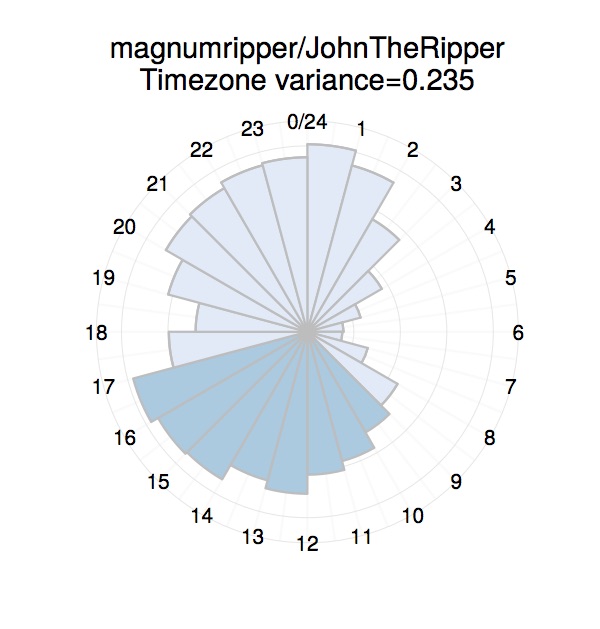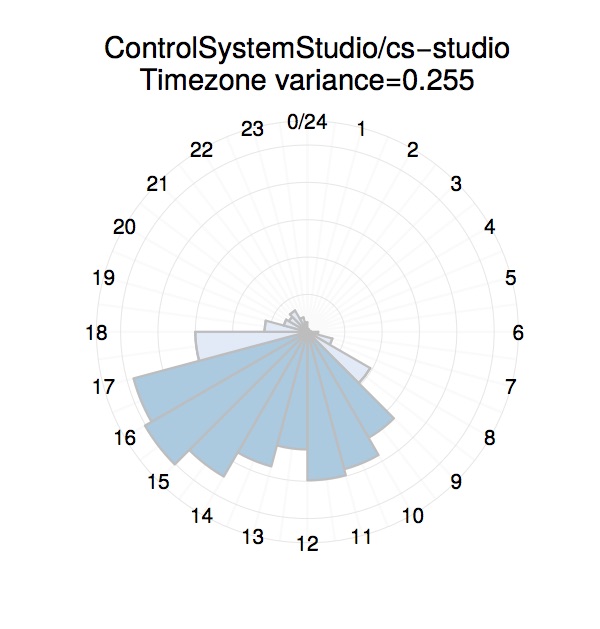Paper accepted at SWAN 2017
We just had a paper accepted at SWAN 2017!
Timezone and Time-of-Day Variance in GitHub Teams: An Empirical Method and Study, with Prem Devanbu, Pallavi Kudigrama, and Cindy Rubio-González from UC Davis.
One of the coolest parts of the paper is the novel use of circular statistics. Did you know that traditional summary statistics (like the mean) are invalid for circular variables like the clock and angles? Here’s an example of circular histograms showing when people made commits in two GitHub projects. Check out the preprint for more details.


Abstract:
Open source projects based in ecosystems like GitHub seamlessly allow distributed software development. Contributors to some GitHub projects may originate from many different timezones; in others they may all reside in just one timezone. How might this timezone dispersion (or concentration) affect the diurnal distribution of work activity in these projects? In commercial projects, there has been a desire to use top-down management and work allocation to exploit timezone dispersion of project teams, to engender a more round-the-clock work cycle. We focus on GitHub, and explore the relationship between timezone dispersion and work activity dispersion. We find that while time-of-day work activity dispersion is indeed associated strongly with timezone dispersion, it is equally (if not more strongly) affected by project team size.
Subscribe
Subscribe to this blog via RSS.
Categories
Blog 3
Reu 1
Announcement 10
Research 1
Travel 1
Social 1
Cmu 1
Recent Posts
-

Infographic: Understanding Toxicity in Open Source Discussions
Posted on 28 Apr 2022 -
 Posted on 01 Jul 2021
Posted on 01 Jul 2021
-
 Posted on 18 Jun 2020
Posted on 18 Jun 2020
-
 Posted on 03 Feb 2019
Posted on 03 Feb 2019
Popular Tags
Blog (3) Web-design (1) Reu (1) Announcement (10) Research (1) Reading-group (1) Travel (1) Social (1) Cmu (1)